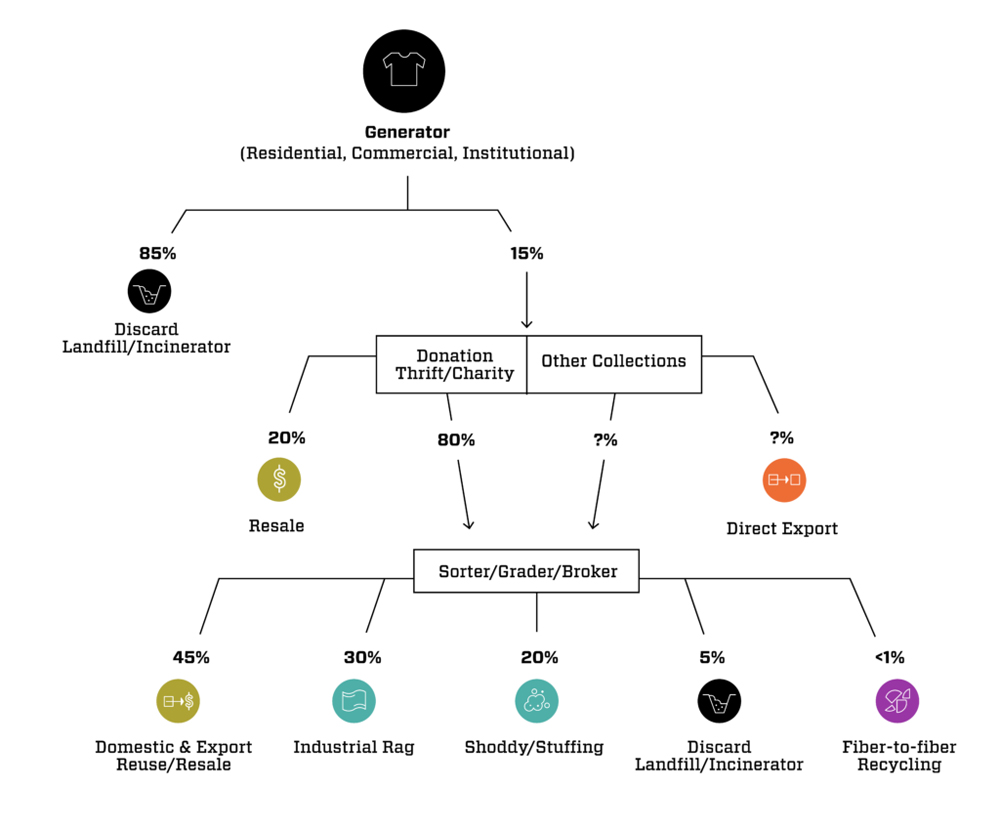
Category: General
Country: United States
Robin Latchem – May 13, 2022
Only about 15% of used clothes and other textiles in the United States get reused or recycled – the other 85% goes to landfill or an incinerator, according to a new report.
Researchers from the National Institute of Standards and Technology (NIST) say one significant obstacle to greater reuse and recycling is that more information for consumers about how to dispose of their used textiles. But they argue consumer knowledge can only go so far.
The report recommends better sorting and grading technologies, smarter labelling and digital product identification, advanced recycling processes for certain synthetics that are not currently recyclable, standardised terminology and classifications and better data collection.
The NIST report, Facilitating a Circular Economy for Textiles, is based on a recent workshop that brought together manufacturers, industry associations, recyclers, waste managers, researchers, policymakers and several major fashion brands.
‘Textiles are one of the fastest growing categories in the waste stream,’ says Kelsea Schumacher, an environmental engineer working with NIST an co-author of the report. ‘But there are a lot of opportunities to reduce waste in this sector that would bring big economic and environmental benefits.’
The report defines textiles to include clothing, shoes, bedding, towels, upholstery fabrics and carpeting. However, the main type of textile in the municipal waste stream is clothing. On average, every person in the US disposed of 47kg of textiles in 2018, the most recent year for which data is available.
The authors of the report compiled data from multiple sources to create a flow diagram that shows what happens to textiles in the United States after they are donated or discarded.

NIST undertook the research as part of its larger circular economy initiative, which until now has focused mainly on ways to keep plastics circulating within the economy.
‘The circular economy is about more than just recycling,’ adds co-author Amanda Forster. ‘It’s about keeping products in their useful form for as long as possible, then when you can’t use them anymore, finding a way to recycle them that preserves as much of their value as possible, and only sending them to the landfill as a last resort.’
Courtesy: https://recyclinginternational.com/textiles/circular-economy-approach-for-us-textiles/48940/
Copyrights © 2025 GLOBAL TEXTILE SOURCE. All rights reserved.